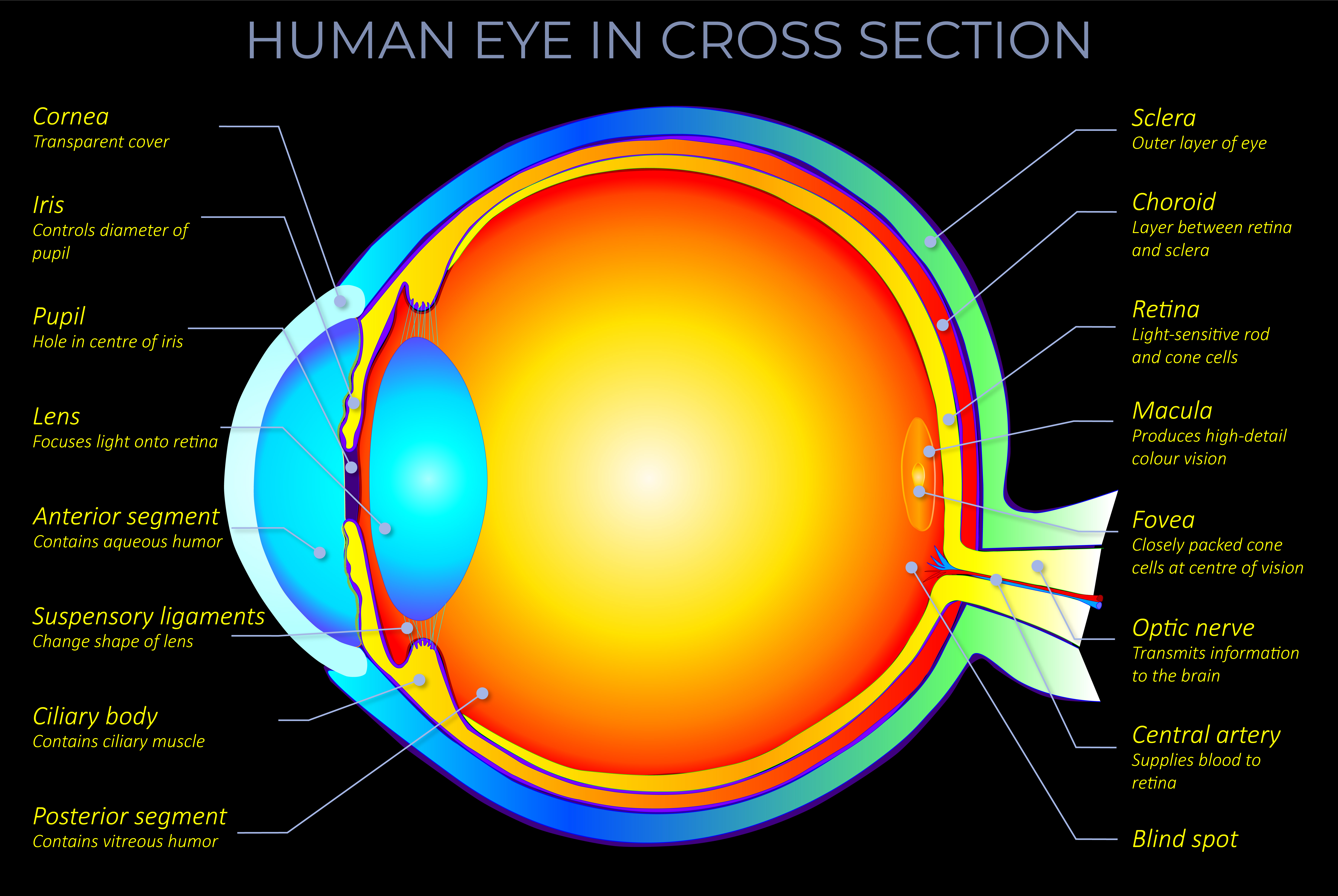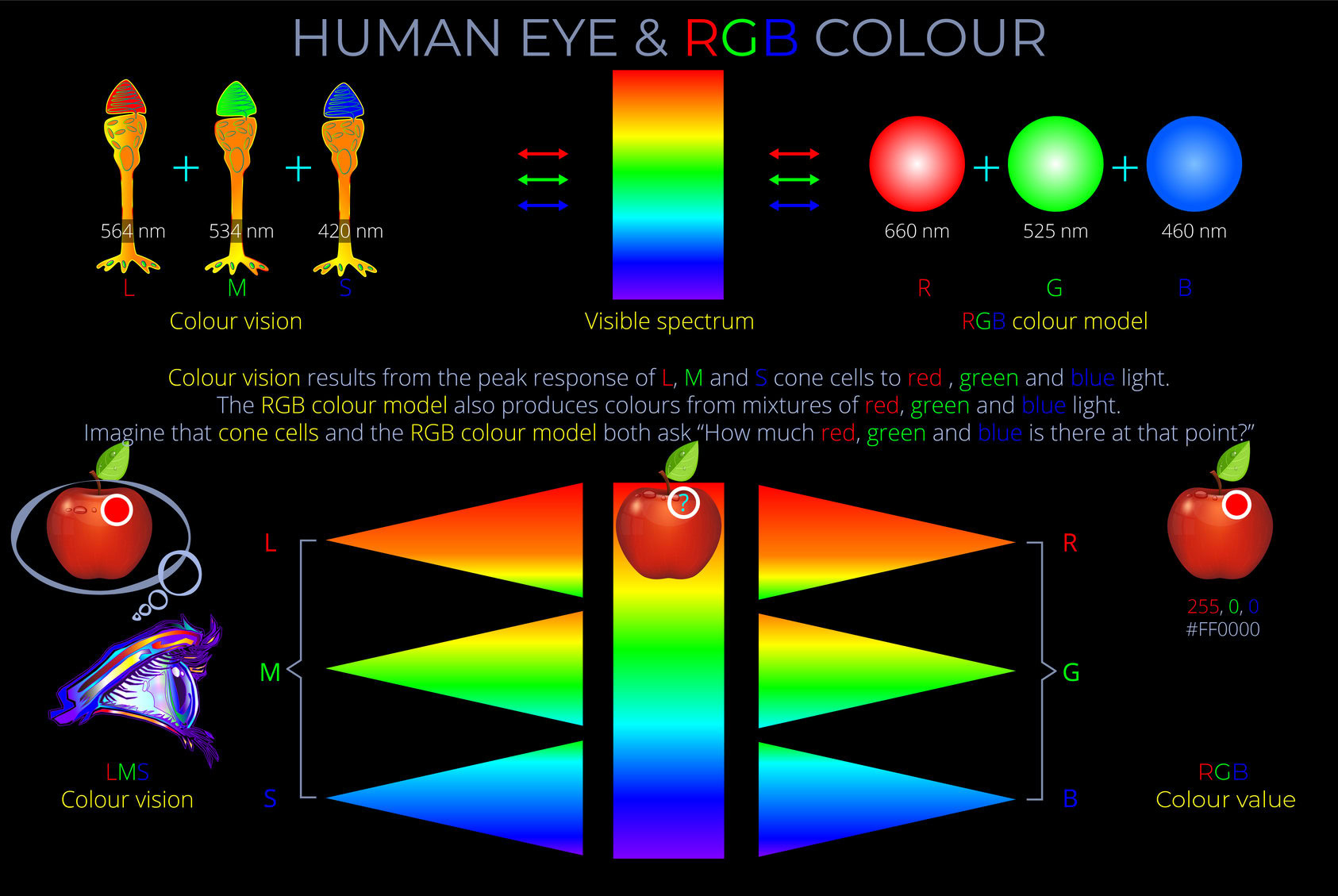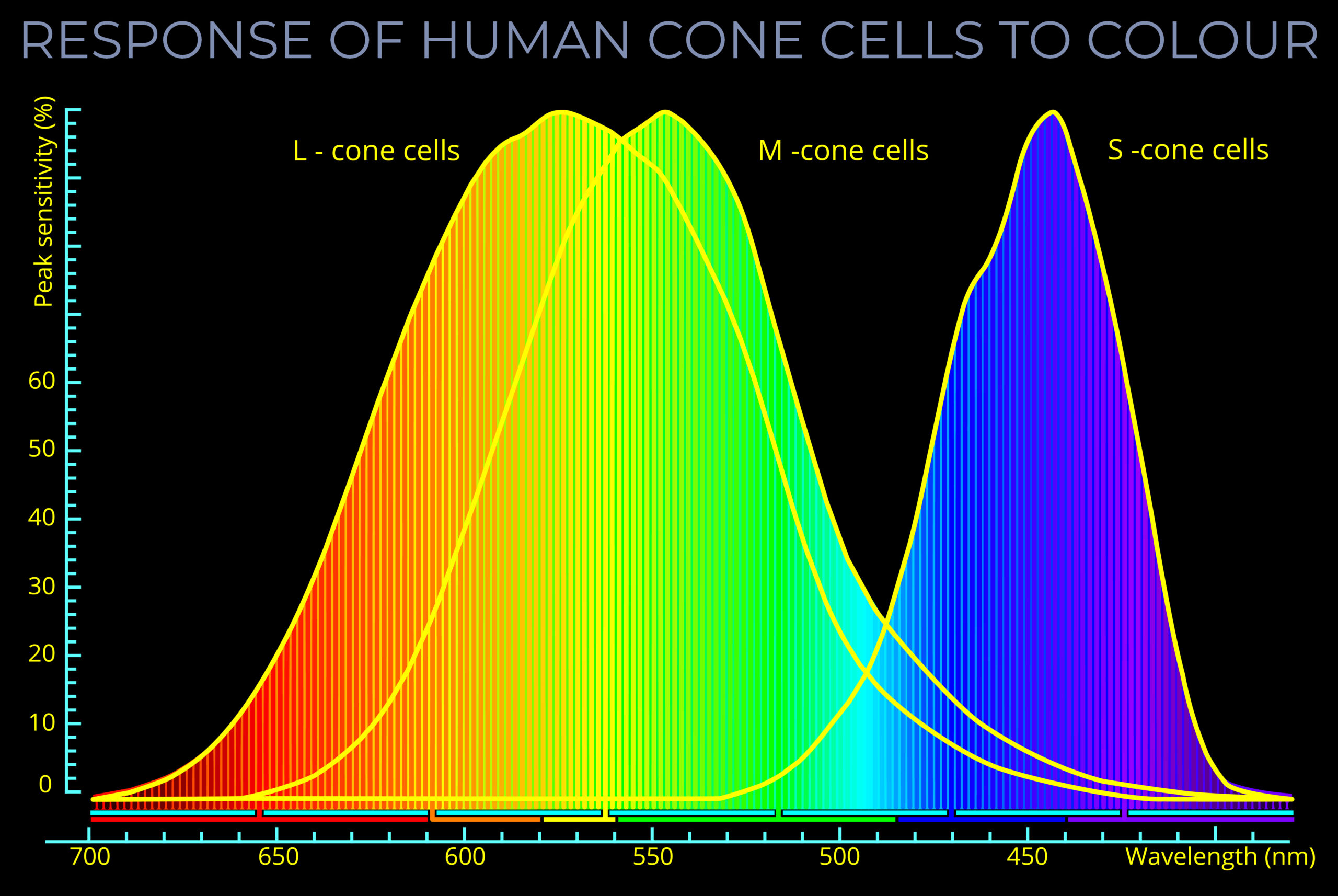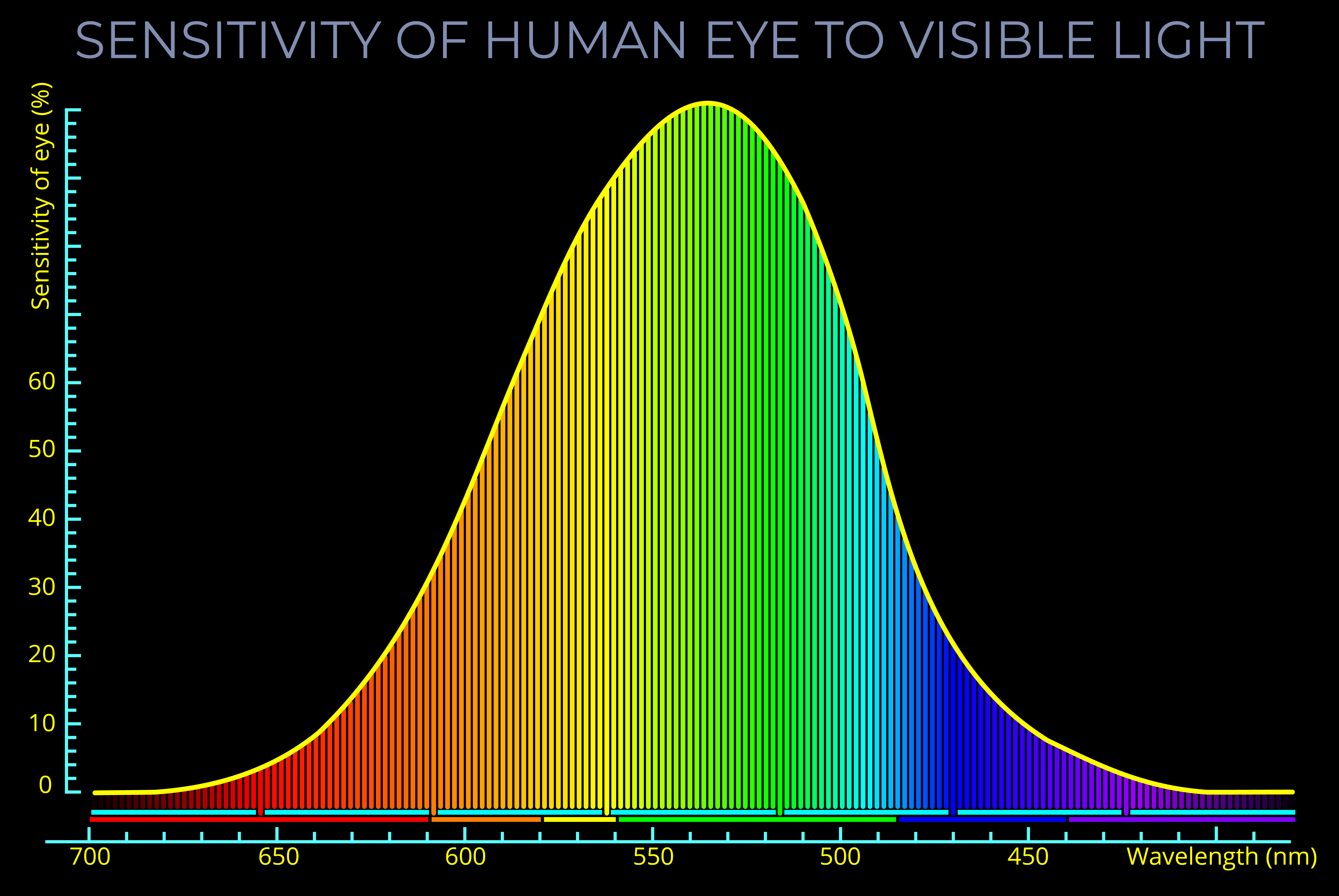Trichromacy (or trichromatic colour vision) is the form of colour vision possessed by human beings and other trichromats that features three different types of cone cells and one type of rod cell within the retina of the eye. It uses three independent channels for conveying colour information to subsequent visual processing centres and towards the visual cortex of the brain.
Trichromatic colour theory of human vision explores various aspects of trichromacy, including:
- The functions, differences, and connections between the three types of cone cells (and the one type of rod cell) and other types of neurons within the human retina.
- The sensitivity of the three types of cones to three overlapping ranges of wavelengths of light that make up the visible spectrum and enable trichromatic colour vision.
- The sensitivity and function of rod cells in low levels of lighting.
- The role of rods and cones in encoding colour information in anticipation of subsequent stages of visual processing.
- The details of the way in which colour information is produced across the entire surface of the retina of both eyes is encoded onto separate channels.



